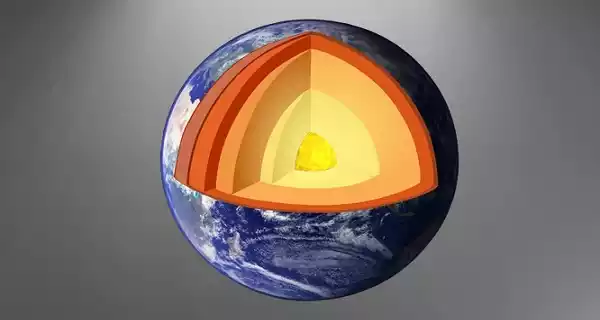In Research Earth’s Inner Core May Have Started Spinning In The Opposite Direction
New Delhi: Recent research said earth’s inner core, a hot ball of iron the size of Pluto, has stopped spinning in the same direction as the rest of the planet and may even be spinning in the opposite direction.
The earth’s core approximately 5,000 kilometres (3,100 miles) below Earth’s surface, this “planet within a planet” can spin independently as it floats in an outer core of liquid metal. Exactly how the inner core rotates is a matter of debate among scientists – and the latest research is expected to be controversial.
What little we know about the inner core comes from measuring tiny differences in seismic waves – created by earthquakes or sometimes nuclear explosions – as they travel through the center of the Earth.
In an effort to track the movements of the inner core, new research published in the journal Nature Geoscience analyzed seismic waves from recurring earthquakes over the past six decades.
The study’s authors, Xiaodong Song and Yi Yang of China’s Peking University, said they found that the rotation of the inner core almost stopped around 2009 and then turned in the opposite direction.
We believe that the inner core rotates back and forth relative to the Earth’s surface, like on a seesaw, they told AFP. One swing cycle is about seven decades, meaning it changes direction roughly every 35 years, they said.
They said it previously changed direction in the early 1970s and predicted the next front would be in the mid-1940s.
The scientists said this rotation roughly coincides with changes in what’s called the “length of the day small variations in the exact time it takes the Earth to spin on its axis. So far, there is little indication that what the inner core is doing has much of an effect on us surface dwellers.
However, the scientists said they believe there are physical connections between all of Earth’s layers, from the inner core to the surface.
We hope that our study can motivate some researchers to create and test models that consider the entire Earth as an integrated dynamical system, they said.
The geophysical community will be divided, experts not involved in the study expressed caution about its findings, pointing to several other theories and warning that many mysteries remain about the center of the Earth.
This is a very careful study by excellent scientists who put in a lot of data, said John Vidale, a seismologist at the University of Southern California. “(But) none of the models, in my opinion, explain all the data very well, he added.
Vidale published research last year that suggests the inner core oscillates much more rapidly, changing direction every six years. His work was based on seismic waves from two nuclear explosions in the late 1960s and early 1970s.
That time frame is around the point at which Monday’s research says the inner core last changed direction in what Vidale called, kind of a fluke.
Another theory, which Vidale said he has some good evidence to support — is that the inner core only moved significantly between 2001 and 2013 and has remained in place since then.
Hrvoje Tkalcic, a geophysicist at the Australian National University, has published research suggesting that the inner core cycles every 20 to 30 years, rather than the 70 suggested in the latest study. These mathematical models are most likely all wrong because they explain the observed data, but the data don’t require them, Tkalcic said.
Therefore, the geophysical community will be divided over this finding and the topic will remain controversial. He compared seismologists to doctors who study the internal organs of patients’ bodies using imperfect or limited equipment.
Lacking something like a CT scan, our picture of the inner Earth is still blurry, he said, predicting more surprises to come. This could include more on the theory that the inner core may have yet another iron ball inside – like a Russian doll.
There’s something going on and I think we’ll figure it out, Vidale said. But it may take ten years.
Read Also | Electronic Toll Collection Through FASTag rises 46% in 2022









